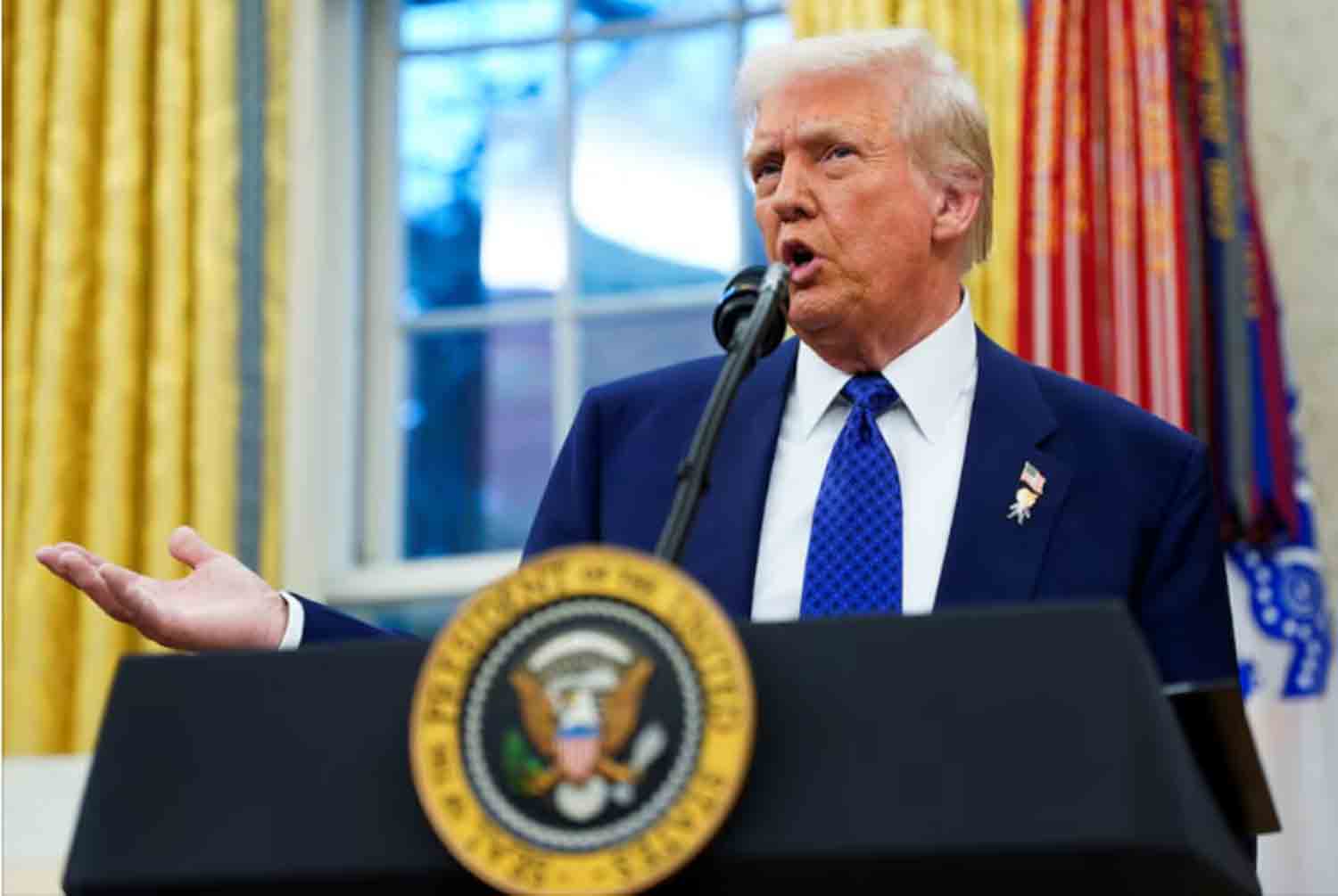Pakistan’s historic decision to acquire up to 40 units of the Chinese fifth-generation stealth fighter J-35A marks a significant transformation in the airpower dynamics of South Asia, positioning the Pakistan Air Force (PAF) to potentially surpass its longstanding adversary India for more than a decade.
Retired PAF Air Commodore Zia Ul Haque Shamshi noted that the introduction of the J-35A fleet will grant Pakistan a ’12 to 14-year’ lead in stealth fighter capabilities over India’s existing air fleet. He pointed out that India is unlikely to deploy a fifth-generation combat aircraft within that period, thereby providing Pakistan with a strategic edge in the region.
🇨🇳⚡🇵🇰 J35A The Gyr falcon 🦅
J-35A – The next advanced Chinese weapon that is set to join Pakistan’s airforce fleet by 2026.
The J-35A is stealth-capable, fifth-generation multirole combat aircraft designed for all-weather operations, capable of both air dominance and strike… pic.twitter.com/L2hebMlWNF
— Monitor𝕏 (@MonitorX99800) May 12, 2025
The J-35A, created by Shenyang Aircraft Corporation, is China‘s second fifth-generation stealth fighter following the J-20 ‘Mighty Dragon,’ but it is specifically designed for export to key allies like Pakistan. The PAF expressed interest in the J-35A last year, with Pakistan Air Chief Marshal Zaheer Ahmed Baber Sidhu announcing at an official event that the stealth aircraft would soon be integrated into the PAF’s fleet. ‘Discussions regarding the acquisition of the J-35A have taken place, and the fighter will be incorporated into the Pakistan Air Force shortly,’ the air chief stated, suggesting an expedited induction process.
Recent reports also suggest that Beijing is hastening the delivery timeline for the J-35A, with the first aircraft possibly arriving in Pakistan as soon as 2025—significantly earlier than the previously anticipated two-year period.
Could China be preparing to provide Pakistan with #J35a after the success of #J10C in #IndiaPakistanWar?
And who might be willing to pay for it? @IMFNews ?
video @CGTNOfficial pic.twitter.com/sWmvVUsK0R
— علی مصطفی | Ali Mustafa (@Ali_Mustafa) May 12, 2025
This urgency highlights China’s increasing strategic partnership with Pakistan in response to rising tensions in the Indo-Pacific region, emphasizing its goal to counterbalance India’s expanding military relationships with the United States and France.
Reports indicate that Pakistan has sent its initial group of fighter pilots to China for training on the J-35A platform, signaling that the agreement has progressed beyond mere planning. The J-35A features a stealth design, sophisticated avionics, internal weapon bays, and likely network-centric capabilities, making it a significant asset for penetrating contested airspace and executing precision strikes and air superiority operations.
Although the J-20 is China’s premier stealth aircraft, its export is restricted due to fears of technology transfer, similar to the U.S. policy on F-22 Raptor exports, positioning the J-35A as China’s primary stealth export fighter. This aircraft is anticipated to be capable of carrier operations, likely designed for deployment on China’s future aircraft carriers, aligning it with the U.S. F-35C and F-35B variants. With an estimated maximum takeoff weight (MTOW) raised to 28,000 kg and powered by twin WS-19 engines producing 12 tonnes of thrust each, the J-35A is projected to offer impressive performance at both high and low altitudes.
Each of the two internal bays can accommodate two medium-range air-to-air missiles, like the PL-15, ensuring a stealthy armament profile while keeping a minimal radar cross-section. The aircraft is also equipped with several external hardpoints for attaching precision-guided munitions, anti-ship missiles, and tactical strike weapons, tailored to mission requirements.
The J-35A’s introduction is anticipated to gradually replace Pakistan’s outdated F-16 and Mirage 5 fleets with a platform that delivers advanced survivability, lethality, and sensor integration. Pakistan’s advancement in stealth technology coincides with India’s reliance on 4.5-generation fighters such as the Su-30MKI and Rafale, which, while formidable, lack stealth features and comprehensive fifth-generation systems integration.
With China deploying the J-20 and Pakistan preparing to introduce the J-35A, India may confront a potential two-front airpower imbalance, prompting significant concerns within its defense sector. This transition may compel India to accelerate its delayed Advanced Medium Combat Aircraft (AMCA) initiative or pursue external fifth-generation options, although none are presently available for export from the U.S. or Russia.
The acquisition of the J-35A by Pakistan not only enhances its deterrent capabilities against India but also signifies China’s wider ambitions to penetrate the global stealth fighter market, especially in light of increasing Western export restrictions. China has even set up a specialized export office to promote the J-35A to potential international clients—an unprecedented step in Beijing’s military aviation diplomacy.
In contrast to the J-20, which is reserved for the PLAAF, the J-35A serves as China’s cost-effective alternative to the F-35, offering multirole capabilities and power projection through allied networks.
For Pakistan, the J-35A represents more than just a fighter jet; it embodies technological equality, geopolitical messaging, and a transformation in future air strategies, enabling deeper, more lethal, and stealthier operations in high-threat scenarios. The introduction of the J-35A will not only signify a technological advancement but also a strategic shift in the airpower equilibrium of South Asia, with implications for conflict escalation, deterrence strategies, and regional arms races within the Indo-Pacific region.
As of May 2025, the Pakistan Air Force (PAF) boasts a strong and varied fleet, reflecting its strategic alliances and changing defense requirements, operating around 1,399 aircraft, making it the seventh-largest air force in the world by fleet size.
Discover more from Defence Talks | Defense News Hub, Military Updates, Security Insights
Subscribe to get the latest posts sent to your email.





